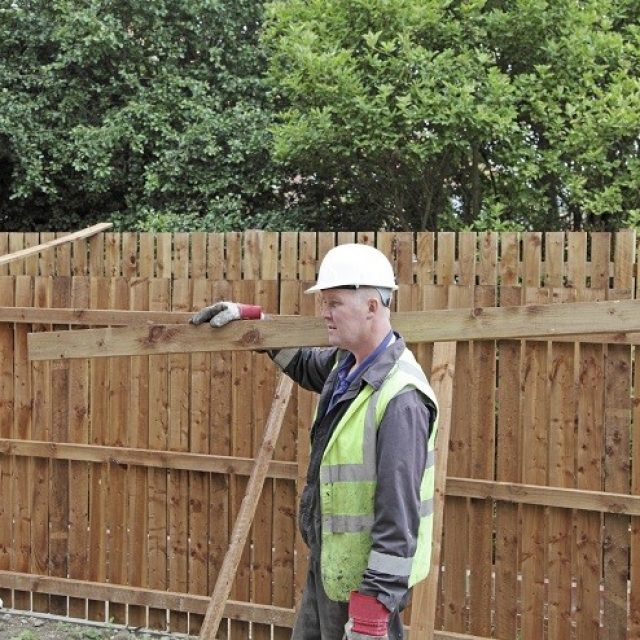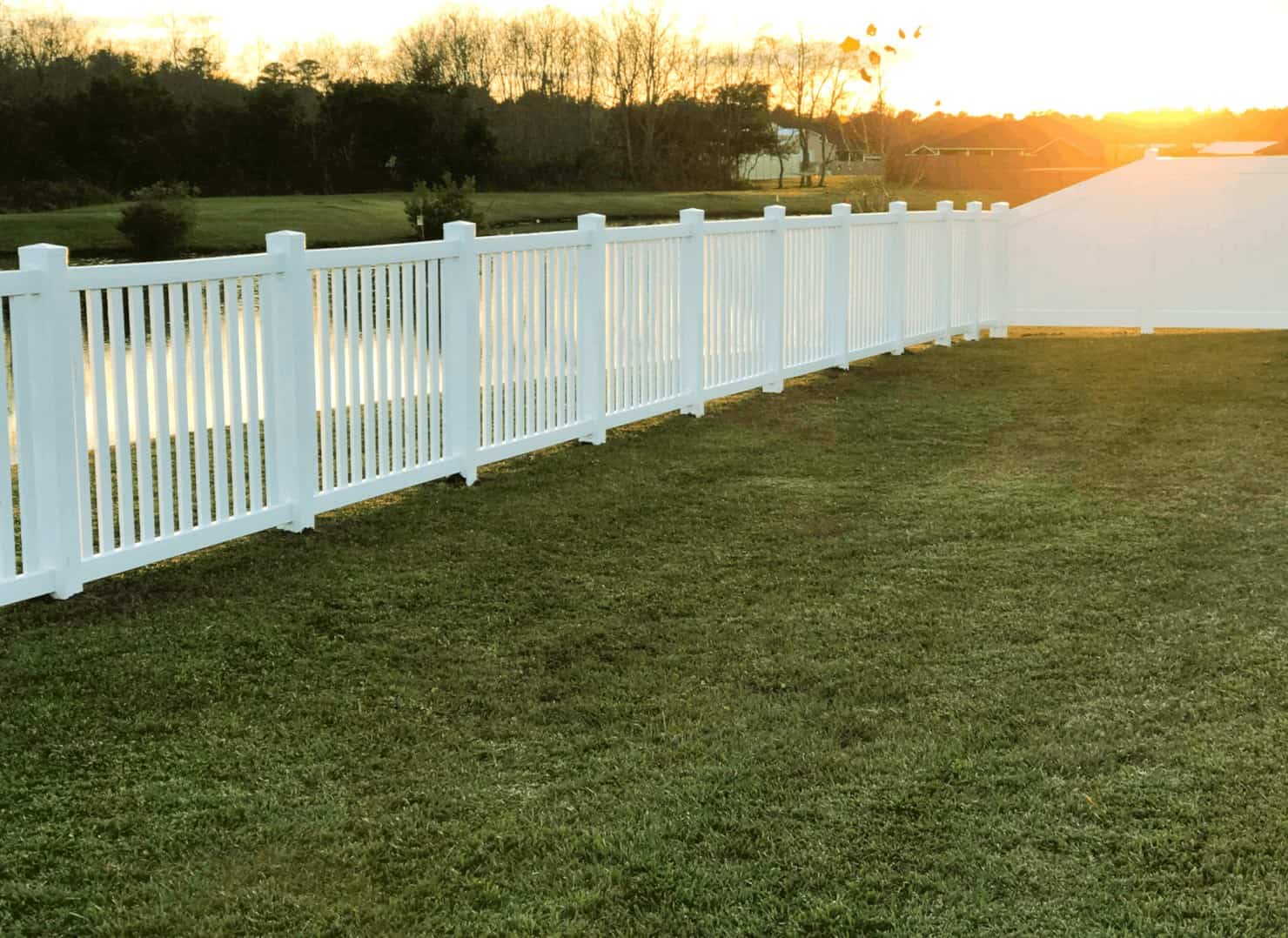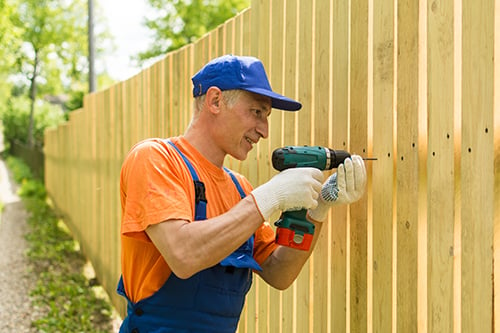How a Creative Deck Builder Can Boost the Value to Your Property
How a Creative Deck Builder Can Boost the Value to Your Property
Blog Article
Exactly How to Recognize Common Issues That Need Immediate Fence Repair
When it involves keeping your fence, it is essential to detect concerns prior to they become bigger troubles. On a regular basis examining for indications of decomposing wood, leaning panels, or corrosion can save you time and cash in the future. You might not understand exactly how weather condition and parasites can jeopardize your fence's integrity. Let's explore the usual indicators that suggest your fencing requires immediate interest, so you can maintain your residential or commercial property safe and secure and looking its finest.
Indicators of Rotting Timber in Wooden Fences
Have you discovered your wooden fence looking a little bit even worse for wear? It might be time to inspect for signs of decomposing timber if so. First, analyze the base of the messages and panels for soft places. That's a clear sign of rot if you push on the wood and it really feels spongy or collapses. Next off, search for discoloration or dark areas on the wood-- these often signal moisture damages. Take notice of any peeling off paint or finish, as this can reveal the timber to more decay. Furthermore, a pungent, moldy scent can suggest fungal development. Don't forget to examine connections and joints; if they hang or dropping apart, the timber below is likely endangered. By catching these indicators early, you can avoid extra substantial damage and maintain your fencing standing strong. Normal upkeep is key to extending the life of your wooden fence.
Leaning or Tilting Fencing Panels
If you have actually seen your fence panels leaning or turning, it's vital to understand what caused it. This issue might suggest underlying structural damage that requires your interest. Let's check out the usual reasons and the repair service choices readily available to obtain your fence back fit.

Sources Of Leaning Panels
It's usually an indicator of underlying concerns that require dealing with when you see your fence panels tilting or leaning. One usual reason is insufficient drain; extreme water can deteriorate the soil around the fencing blog posts, compromising their assistance. An additional wrongdoer can be solid winds or tornados that press versus the panels, particularly if they're not appropriately secured. Additionally, the all-natural settling of soil over time can trigger articles to change, leading to a tilt. Parasites, like termites, can jeopardize the stability of wood panels, creating them to lean. Bad setup practices may result in panels not being firmly established, leaving them at risk to leaning under stress. Address these concerns quickly to preserve your fencing's stability.
Indicators of Architectural Damages
Seeing leaning or tilting fence panels can be disconcerting, as these problems usually indicate structural damage that needs immediate focus. When your fence begins to lean, it may signal that the articles are moving or that the dirt around them has eroded. Pay attention to spaces in between blog posts or panels, as these can likewise suggest instability. deck builder. Furthermore, look for splits or splintering in the timber, which can deteriorate the general structure. It might compromise the integrity of the fencing if you observe rust or corrosion on metal elements. Keep in mind, neglecting these indicators can result in much more severe damages down the line, so it's vital to evaluate the scenario quickly and do something about it before it aggravates
Fixing Options Available

Rust and Corrosion in Metal Fences
If you possess a metal fencing, you might observe rust and rust sneaking in in time, specifically if it's subjected to wetness. These problems not only impact the appearance of your fence but can likewise compromise its architectural honesty. To identify rust, seek reddish-brown spots or patches, which suggest the metal is oxidizing. Deterioration can spread promptly if left unattended, weakening the fencing and leading to costly repairs.To tackle corrosion and corrosion, you must clean the affected locations with a cable brush and use a rust-inhibiting primer. As soon as the primer dries, consider repainting the fence with a weather-resistant paint to shield it even more. Regular upkeep, such as checking for signs of corrosion and touching up paint as required, will aid prolong your fencing's lifespan. Attending to these concerns without delay assures your steel fence continues to be solid and aesthetically appealing for many years ahead.
Splits and Divides in Plastic Secure Fencing

Reasons For Plastic Damages
Plastic secure fencing is preferred for its longevity, yet it can still experience cracks and splits as a result of various factors. One major cause is severe temperature changes. When plastic broadens in the heat and contracts in the cool, it can deteriorate the material over time. Additionally, exposure to harsh sunshine can bring about UV deterioration, making the plastic breakable. Physical impacts, like unintentional crashes or hefty branches, can additionally develop splits. Poor installment or utilizing low-grade products can intensify these concerns. Age plays a duty; older vinyl secure fencing is a lot more vulnerable to damage. Regular examinations can help you determine these elements before they cause significant issues. Take proactive steps to assure your fence remains undamaged and strong.
Repairing Cracks Properly
Fractures and divides in your plastic fence can be concerning, addressing them promptly can protect against additional damage and preserve the fence's look. Evaluate the size of the crack. For little fractures, a vinyl repair set typically includes sticky that can bond the sides, supplying a seamless solution. Tidy the area thoroughly prior to using the adhesive, guaranteeing it sticks correctly. For larger divides, you may require to use a plastic patch. Cut the patch to dimension, apply sticky around the edges, and press it firmly onto the split. Enable it to treat according to the supplier's directions. look here Routine maintenance and fast repair work can extend your fence's life-span, keeping it looking great for several years to come.
Loose or Missing Fencing Messages
Loosened or missing fence posts can weaken the security of your whole fencing framework. If you see any posts leaning or wobbling, it's the original source important to deal with the concern quickly. Inspect for any indications of activity, as this can lead to more damage over time. You can easily evaluate the issue by offering each article a gentle shake-- if it really feels unstable, it's time to take action.For missing out on messages, you'll need to change them as quickly as possible to preserve your fencing's stability. Make certain they're firmly secured in the ground with concrete or crushed rock for included security when you install new articles. If a post is loose, tighten it by including added assistance or driving it deeper right into the ground.Ignoring these issues can result in bigger problems, like spaces in your fence and even complete collapse. So, watch on your articles and stay proactive about repairs!
Damages From Weather and Natural Elements
Weather condition and natural environments can damage your fencing, resulting in different types of damages that require prompt interest. Heavy rain can create timber to rot, making it weak and unstable. Snow accumulation could flex or break panels, while strong winds can uproot fence articles or cause sections to lean.If you see splits or splintering in wood fencings, it suggests drying out because of extreme sun exposure. On the other hand, steel fencings can rust if safety finishes wear away, especially in coastal or humid areas.Inspect your fencing frequently after storms or severe climate to capture any type of damages early. Addressing these issues rapidly can save you from expensive fixings down the line. Don't wait till a small issue becomes a significant one; remain positive and keep your surround top form to maintain both performance and visual charm.
Pest Invasion and Termite Damage
It's crucial to act quickly to protect against additional damage when you notice signs of pest problem or termite damage. Look for mud tubes along your fencing or hollow-sounding timber, as these show termites go to job. You may additionally see small holes or frass, which is termite droppings appearing like sawdust. If you spot any of these indications, it's time to examine the damage.Don' t wait till it's far too late; pests can compromise your fencing's honesty. Inspect the surrounding location for beetles or ants, as they may be adding to the problem. If you discover this believe an infestation, take into consideration contacting a parasite control specialist to treat the issue.repairing and validate or changing damaged areas of your fencing immediately not only recovers its toughness yet also avoids parasites from spreading additionally. Stay cautious to keep your home pest-free and safe.
Regularly Asked Inquiries
How Frequently Should I Examine My Fencing for Damage?
You must examine your fence at the very least two times a year, ideally throughout spring and fall. Normal checks help you spot damage early, conserving you money and time on repair services while preserving your property's appearance and security.
Can I Repair a Fencing Myself or Work With a Specialist?
You can definitely repair a fencing on your own if you have the right tools and skills. Hiring an expert guarantees quality work and conserves you time, particularly for complicated repairs or substantial damage.
What Devices Are Required for Standard Fencing Repairs?
For fundamental fencing repair services, you'll require devices like a hammer, screwdriver, pliers, a saw, a level, and determining tape. deck builder. Relying on the repair service, you might likewise need nails, screws, or replacement boards
Just How Much Does Fence Fixing Typically Expense?
Fencing repair work expenses vary commonly, yet you can anticipate to pay in between $200 and $1,500 depending on products, labor, and degree of damage. It's clever to obtain numerous quotes for the finest offer.
When Is the Best Time of Year for Fencing Repair Works?
The most effective time for fencing repairs is during mild weather, typically in spring or early autumn. You'll avoid extreme temperature levels, making it much easier to function and ensuring the materials established appropriately for lasting resilience (deck builder). Discovering leaning or tilting fence panels can be worrying, as these issues typically show architectural damages that requires immediate focus. Loosened or absent fence posts can undermine the stability of your whole fence framework. Snow build-up could bend or break panels, while strong winds can uproot fence posts or create sections to lean.If you observe cracks or splintering in wood fences, it's a sign of drying out due to extreme sun exposure. Steel fences can rust if safety layers use off, specifically in seaside or humid areas.Inspect your fencing on a regular basis after storms or extreme weather condition to capture any type of damage early. Fence repair service costs differ commonly, yet you can anticipate to pay between $200 and $1,500 depending on products, labor, and level of damages
Report this page